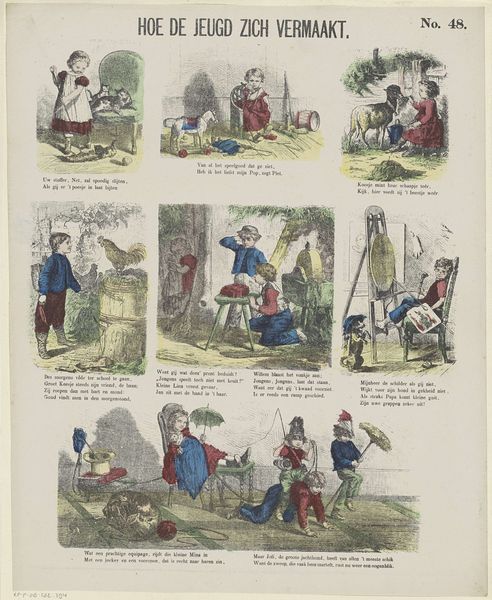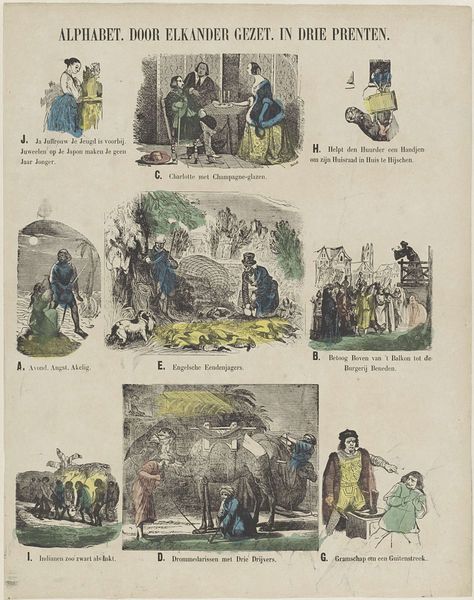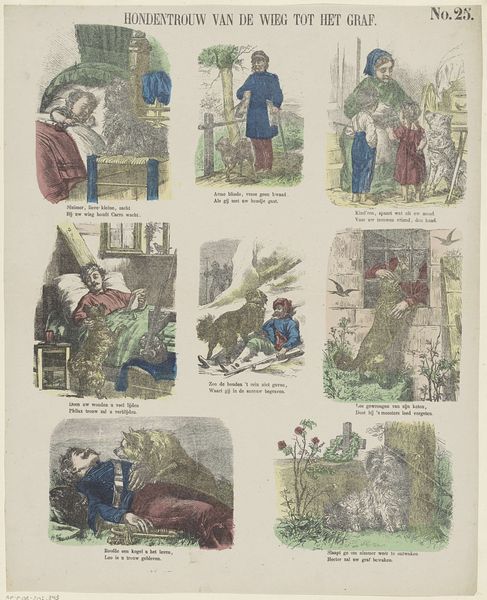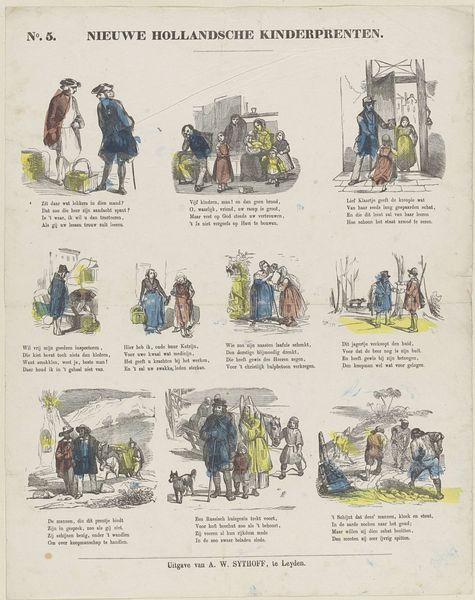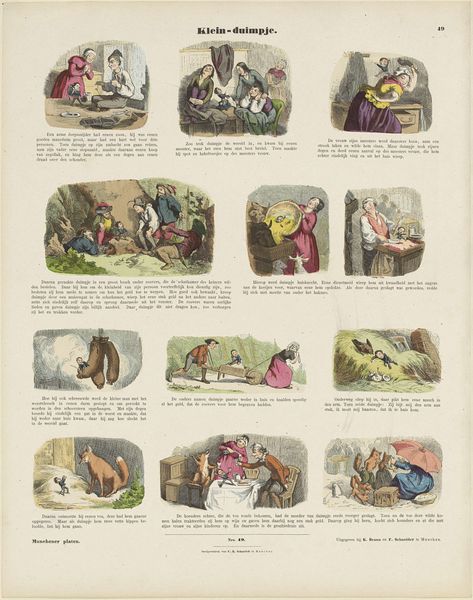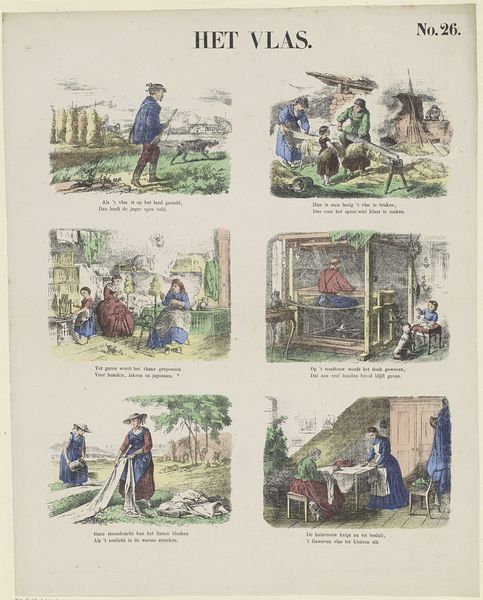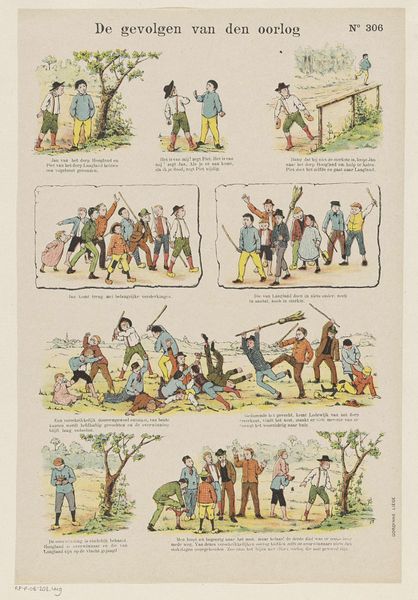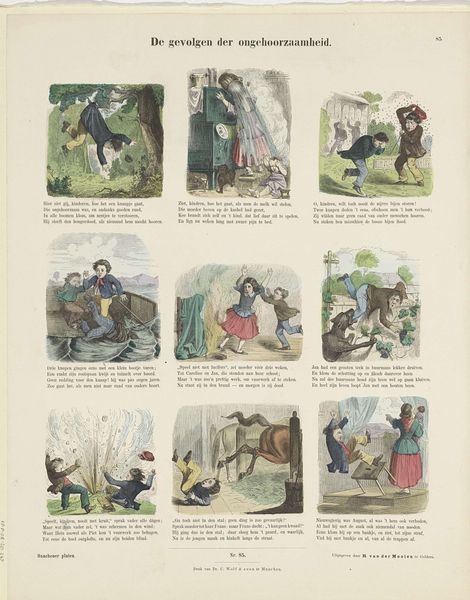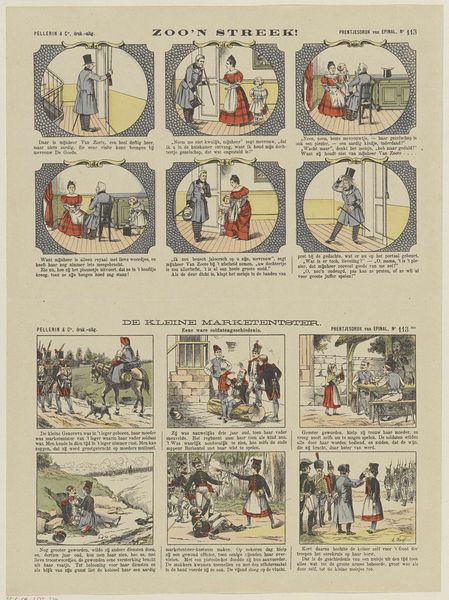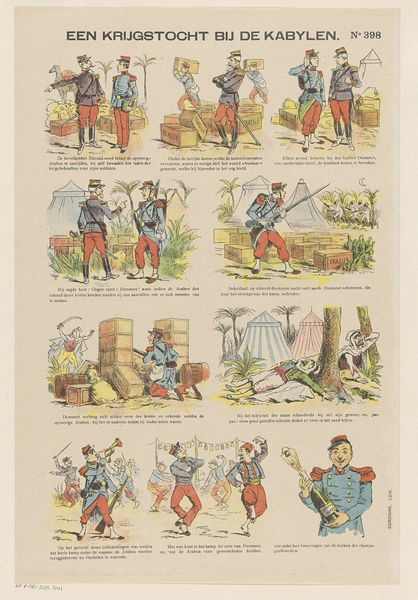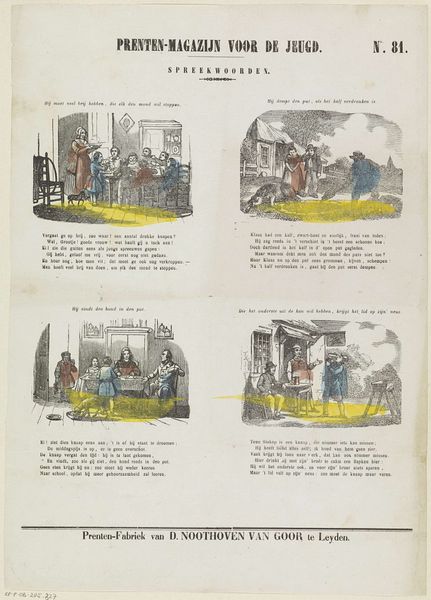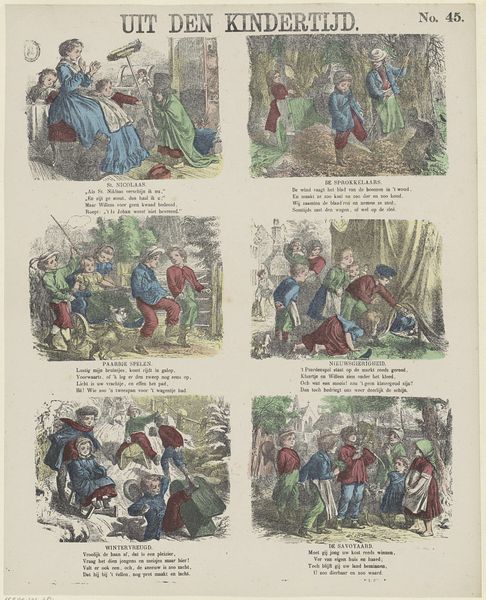
drawing, print, etching, pen
#
drawing
#
narrative-art
# print
#
etching
#
coloured pencil
#
pen
#
genre-painting
Dimensions: height 441 mm, width 350 mm
Copyright: Rijks Museum: Open Domain
Editor: So, this print is called "De drie dieven," or "The Three Thieves," created sometime between 1843 and 1920. It’s a drawing, an etching with pen and colored pencil… it looks like a page from a book or magazine. There's a narrative across different panels; it reminds me of early comic strips. What strikes you about it? Curator: This composite image really speaks to the methods of print production during its time. It uses multiple panels, probably produced through etching and then touched up by hand with pencil and colored pencil, to suggest both a seriality akin to early mass media and also an intimacy and unique mark of labor. Consider how this artwork likely circulated – was it bound? Passed around? Editor: That’s interesting. The fact it’s a print made for distribution makes me think about the story itself - a lighthearted view of stealing? It’s more complicated than just the romantic rogue if it's made for wider consumption. Curator: Exactly. What statement do you think the means of its production – etching and coloration – makes about our relationship with labor and value? It appears almost hand-made even though there's clearly reproducibility and circulation at work. Is it celebrating or commenting on changing production methods of images at the time? Editor: I see what you mean. On the one hand, you have a handcrafted feel with the additions of colour by hand; on the other, it depicts pretty common acts like eating and working in a social setting. High art being applied to what was once considered an everyday motif and the blending of labour, class and taste… food for thought. Curator: Precisely. It compels us to consider the artist's labor in relation to those depicted, complicating simplistic narratives of crime and punishment. How might its value be perceived considering both material means and labor put in? Editor: That really gives me a different perspective on the social context of image-making back then, versus the art object as an isolated 'masterpiece.' Thanks!
Comments
No comments
Be the first to comment and join the conversation on the ultimate creative platform.
